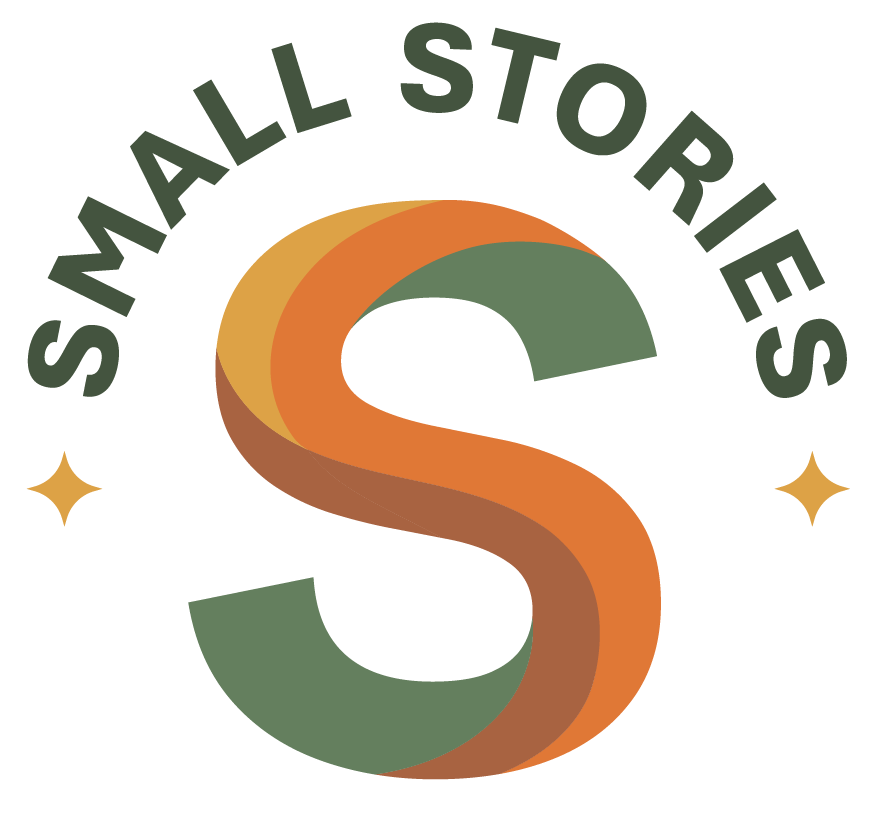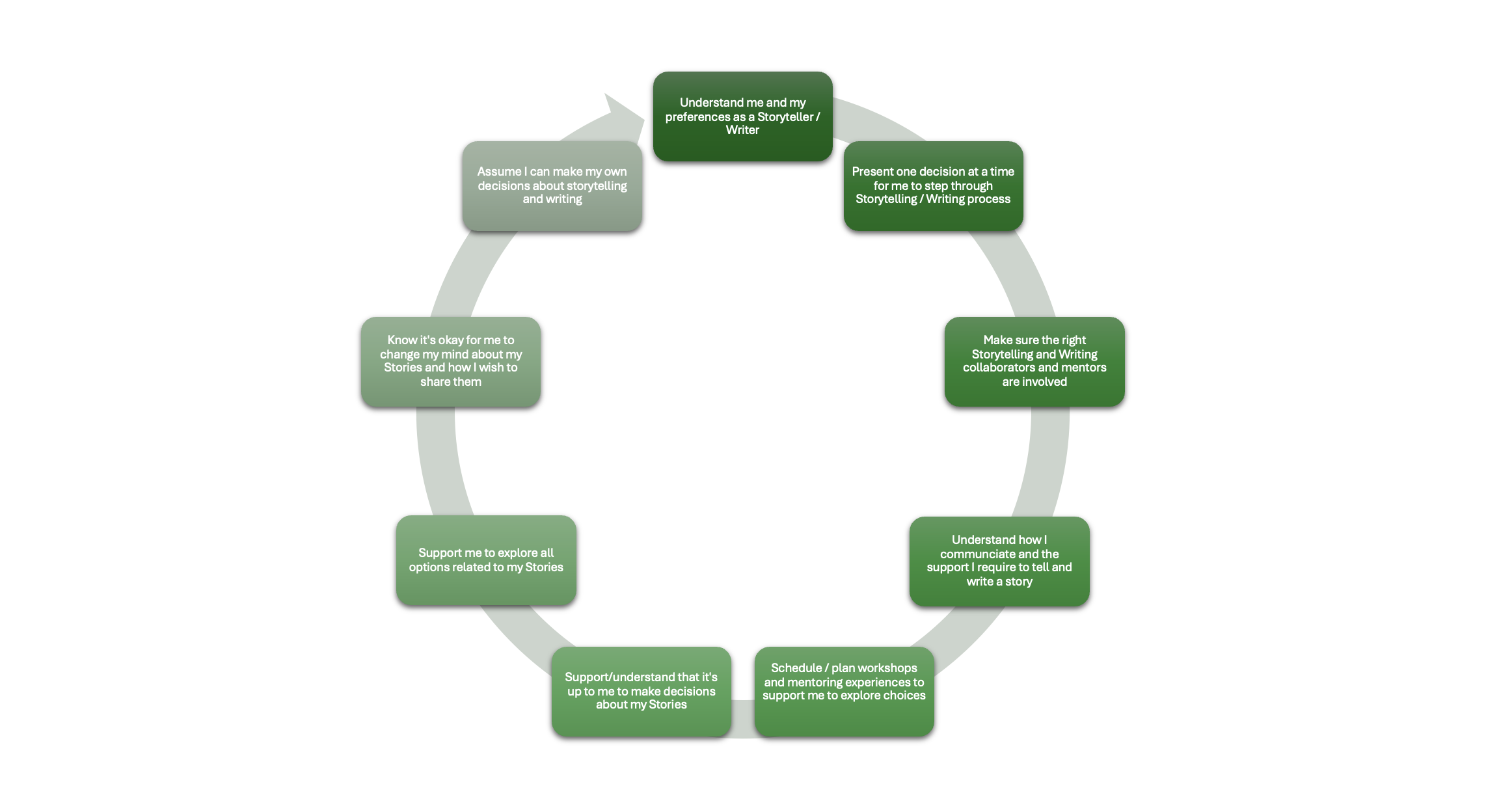Storyteller Support
Storyteller Support has been designed to develop your skills to build productive creative relationships with Storytellers. Supported Decision Making, Trauma Informed Approaches, Consent, Boundaries, Language and Conflict Resolution guidance can be sourced via the sections at the bottom of this page.
Before we dive into the Story training framework, it’s important to complete additional training to ensure we are the best prepared we can be to work with individuals with Intellectual Disability /Complex Communication Needs (ID/CCN).
The following guidance on supported decision making practices will ensure you frame your practice in a way that best supports the needs and wants of a person with ID/CCN.
Supported Decision Making
Supported decision making is underpinned through knowledge of the following:
My Beliefs
These can be discovered through an entry process whether in person or written questionnaire for support network to complete.
Know Me
To get to know who I am you will need to ask questions, observe me in a 1:1 mentoring or group session, spend time with me.
Questions could include:
Do I enjoy telling and/or listening to stories?
What types of stories do I enjoy?
Do I require support to communicate? If so, what type of support? Is it a specific communication partner, an application on iPad, a specific communication device etc.
My Supporter Group
Get to know my support network without overriding me and my decision-making processes.
Ensure there is no talking about me in third person whilst I am sitting or standing next to you.
Considerations for an organisation I might be interested in engaging with
If I am interested in sharing my stories in community, I will require:
An accessible toilet
Ramp and front doorbell I can reach
My support worker to accompany me
Knowledge of ACROD parking bays very close by
Easy read – whether I require or not
For my receptive language I need to use Easy English
For my reading, it is important for me to use COMPIC – Pictures with Words
For my expression I will use my iPad with an application such as proloquo2go
My communication preferences
What kind of environment do you require to achieve your best outcomes?
Please describe how you communicate
Support me
Support my story decisions.



